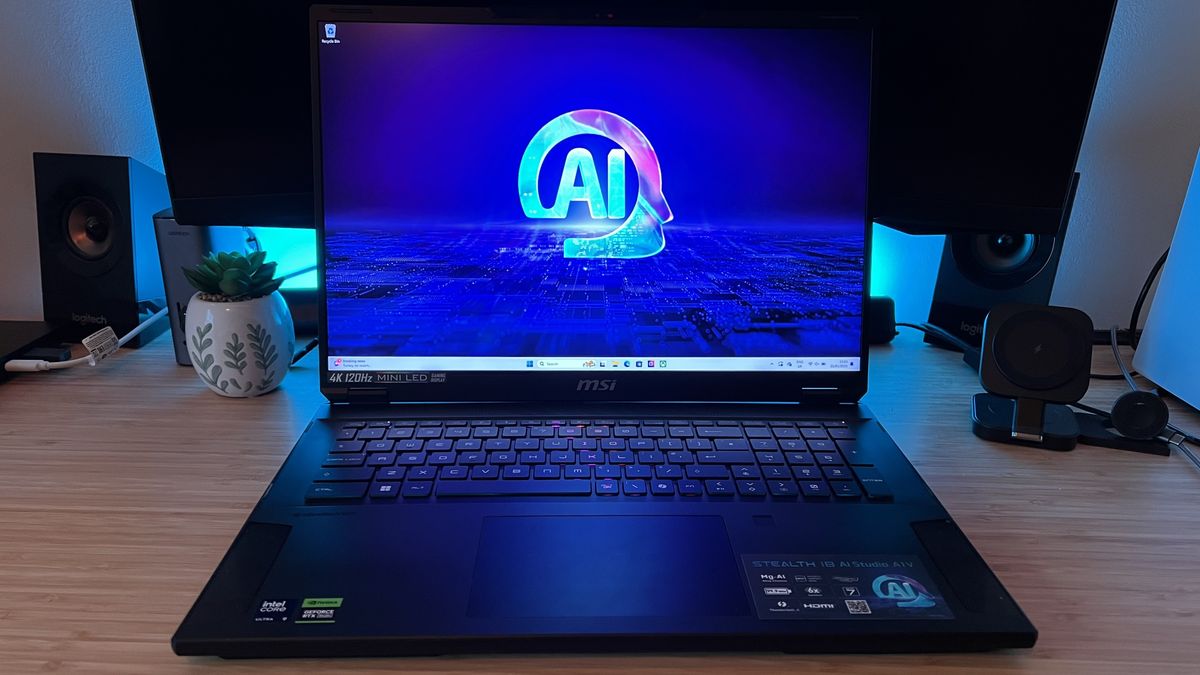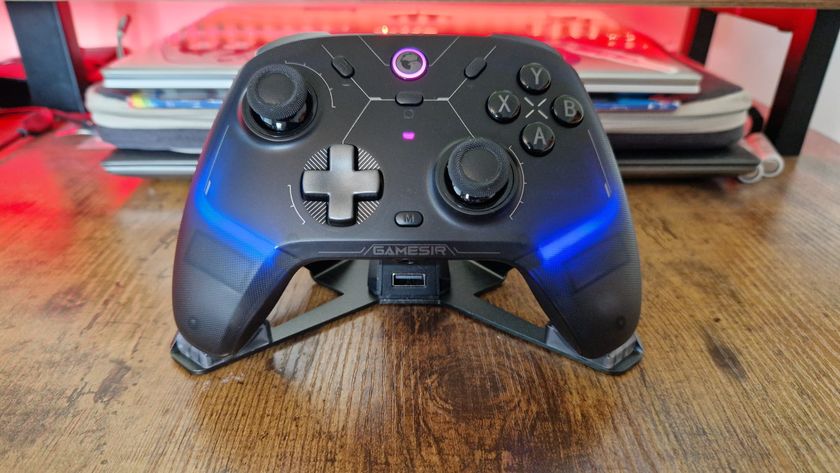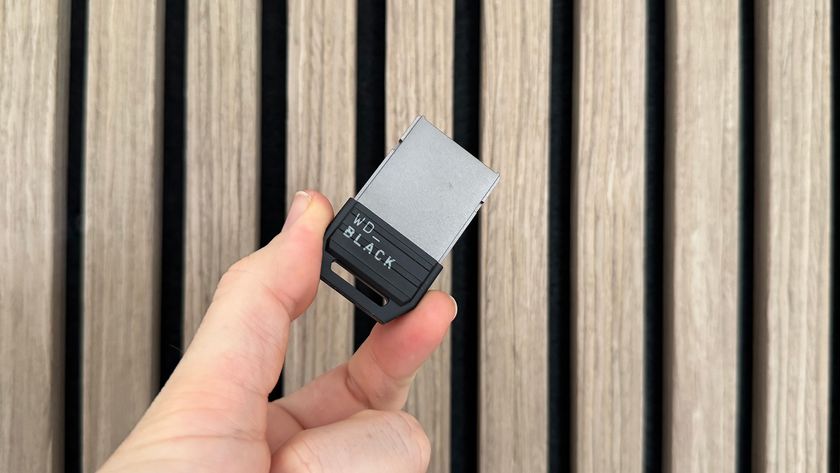12DOVE Verdict
The MSI Stealth 18 AI Studio feels like it doesn’t know what it wants to be. While it’s great to have another slimline 18-inch machine to go up against the Razer Blade, its performance drops behind other RTX 4080 configurations out there, and RTX 4090 machines in MSI’s own lineup are only slightly more expensive.
Pros
- +
Fantastic display
- +
A rare slimline 18-inch device
- +
Subtle design will work for some
- +
AI focused spec offering
Cons
- -
Expensive for its horsepower
- -
A few too many creaks
- -
Keyboard feels too far left
Why you can trust 12DOVE
As one of the few slimline 18-inch gaming laptops on the market, the MSI Stealth 18 AI has a lot going for it. It’s sleek, relatively lightweight (in this category at least), and packs the specs to take on both day-to-day content creation and evening gaming jobs. It’s got some stiff competition in the Razer Blade 18, a machine that packs a better build quality at a similar price (but you’ll need to drop the 4K display to get there), and doesn’t quite reach the heights of the far more premium MSI Titan 18 HX and MSI Raider 18 HX.
This is a niche machine - it’s not going to work out for most, but with a fantastic display at the helm and plenty of AI future-proofing it could be perfectly tuned for some. I spent three weeks testing the RTX 4080 version of the MSI Stealth 18 AI Studio, putting it up next to the best gaming laptops on the market to see how it fares.
| Price | ≈$3,749 | Row 0 - Cell 2 |
| Display | 18-inch 4K Mini LED at 120Hz | 18-inch QHD+ IPS at 240Hz |
| Processor | Intel Core Ultra 9 185H | Intel Core Ultra 7 155H |
| GPU | Nvidia GeForce RTX 4080 | RTX 4090 | RTX 4070 | RTX 4060 |
| RAM | 32GB RAM | 16GB | 64GB |
| Storage | 2TB SSD | 1TB SSD |
| Connectivity | WiFi 7, Bluetooth 5.4 | - |
| Ports | 1x HDMI 2.1, 1x Ethernet, 1x Thunderbolt 4 (Power Delivery, DisplayPort), 1x USB 3.2 Gen 2 Type-C (DisplayPort), 2x USB 3.2 Gen 2 Type-A, MicroSD, 3.5mm audio | - |
| Dimensions | 0.94 x 15.74 x 11.41 inches | - |
| Weight | 2.8kg (6.39lbs) | - |
Design
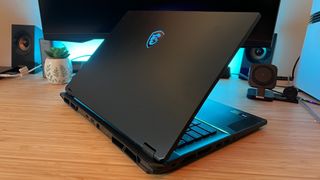
Stealth is the name of the game here, and MSI’s slimline machine doesn’t want to give anything away. Yes, it’s a gaming laptop first and foremost, but the minimalist design means it can slide under the radar in a more professional setting as well. The full black design is on the cusp of being boring, without the extra red or blue flairs found on the Titan and Raider line to help it make its mark. Instead, this is a full matte aesthetic with very little in the way of distinguishing features. Save for those slightly gray upward-firing speakers on the main deck, a skinny strip (so skinny you could easily miss it) of RGB lighting, and a slightly indented keyboard, this is a simple black brick. I do like that small burst of color, it's just the right level of pzazz without taking over the deck as a whole - but the Stealth feels like it needs more of these nods running elsewhere in the design.
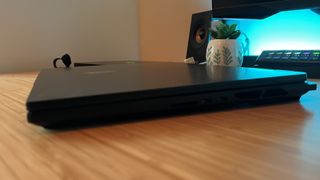
The trouble here is the MSI Stealth 18 AI Studio doesn’t feel like a high-end black brick, in the same way as the Razer Blade 18. Where Sneki’s machines are cold, hard CNC-milled aluminum, MSI has gone with a magnesium-aluminum alloy to keep that weight down. That means this thing is flexy - even the slightest push on the main palm rest area causes the entire keyboard to sink and the lid has far too much give for a machine this close to $4,000.
Striking a balance between build quality and portability is tough, but in sacrificing durability this much, MSI has shot itself in the foot in both regards. The machine creaks just a little too much when pulled out of a backpack for me to feel fully comfortable carrying it around all day, even if it is light enough to do so.
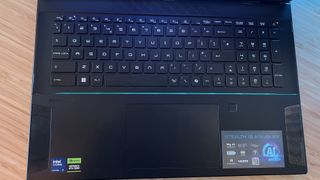
There’s another troubling design flaw here, and it rears its head once you open up the shell and start typing. The keyboard itself feels great, but the inclusion of the full-sized keys and number pad means the main deck is shifted way over to the left. With a central trackpad, I was constantly nudging the cursor when writing, due to my palm accidentally hitting the top corner of the mouse area. I had to adopt a strange floating stance with my right hand just to stay free of these accidental moves and clicks.
Features
The MSI Stealth 18 AI Studio that I tested came with an RTX 4080 GPU, Intel Core Ultra 9 185H processor, and 32GB RAM under the hood. That configuration costs $3,749 with a 1TB SSD attached, but mine came with 2TB - a spec I haven’t seen advertised anywhere with a price tag.
In fact, prices are hard to nail down on these rigs. They’re available with a wide range of GPU options with everything from an RTX 4060 to RTX 4090 available, and a choice of either that top spec Intel Ultra 9 or an Intel Ultra 7 155H - but availability seems to be limited to the RTX 4090 / Intel Ultra 9 model from what I’ve seen on easily accessible shelves.
Still, those are solid specs. The Ultra 9 185H processor, a CPU that’s in a difficult position in 2025. It’s not the most AI-efficient model that’s going to be available in the next few months, with Intel’s new 200-Series models quickly entering the market. It’s not even the most powerful AI CPU of last year, with AMD’s Ryzen AI 9 HX 370 taking the win in the last few months for those wanting to use their laptops for machine learning operations. This is an older processor originally designed with AI in mind - so it’s not particularly game-focused. In my testing, machines with the traditional Intel i9-14900HX ran better under demanding gaming conditions, outside of sterile CPU-specific benchmarks.

The aforementioned poorly placed keyboard sits above those components, and for my misgivings about its location, it provides a solid working base. Key travel is nice and snappy, with a satisfying clack to each press that feels both bouncy and smooth - this is one of the few 18-inch keyboards that I haven’t had to spend days re-learning. Spacing and size felt intuitive with very few accidental presses.
Then we get to the screen. This 4K Mini LED panel is simply gorgeous, with local dimming to reach from super bright, vibrant images all the way down to complete blacks in an instant. Details are extremely well defined on this screen, especially at that full 4K whack, and the panel nails it with a super precise color accuracy. A matte finish means there are no glare issues in high lighting, without washing out the color on-screen.
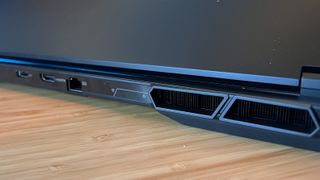
Ports are spread across all three panes, with all your more permanent connections handily situated towards the rear. That means you can connect power, ethernet, and your HDMI in the back panel and - if you keep your laptop firmly on the desk - never have to deal with them again. The right side features a slick Thunderbolt 4 with both power delivery and DisplayPort, as well as a standard DisplayPort USB-C, with two USB-As on the left. That’s a solid amount of ports, though there are 18-inch gaming laptops out there with more connectivity. The Razer Blade 18, MSI Titan 18 HX, and MSI Raider 18 HX all add an extra USB-A to the mix, for example.
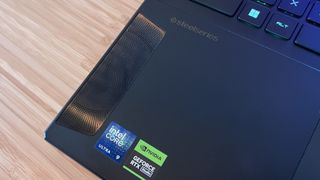
Elsewhere, you’ll find a set of impressive upward-firing speakers that can easily fill a room with the sounds of your games and music and stretch pretty well over the sound of the fans as well. The lower ranges are a little fuzzy at high volumes, causing some buzzing when at full pelt which sometimes caught me off guard. You’ll also find a fingerprint sensor for Windows’ biometrics systems as well.
Performance
The MSI Stealth 18 AI Studio falls short of other 18-inch gaming laptops in its performance, but can still put up a good fight if you need to run your games at 4K with some setting adjustments. More demanding games like Total War: Three Kingdoms and The Talos Principle 2 manage to stay above 60fps in High settings, but dropped short of that goal at full whack. Meanwhile, easier titles like Shadow of the Tomb Raider still hit three-figure framerates comfortably at UHD resolutions. That’s with an RTX 4080 at the helm - I tested the MSI Raider 18 HX and MSI Titan 18 HX with RTX 4090 GPUs, and the upgraded graphics offer a slight boost in 4K performance. Considering you’re only spending a couple hundred bucks to get the RTX 4090 Raider model, it could well be worth the upgrade.
Compared with other RTX 4080 QHD+ tests I’ve conducted, on the Lenovo Legion Pro 7i Gen 9 and Asus ROG Strix Scar 16, the MSI Stealth 18 AI Studio falls slightly short again. That’s with the larger 18-inch chassis in tow, though with a slimmer form factor overall. These are all more than playable, but that 61fps average result in Epic settings on Returnal does indicate that a smaller but chunkier machine like those named above is more future-proofed for now. The MSI Studio 18 AI Studio did win in the raw performance matchup against the similarly slimline Razer Blade 18. This rig packed an RTX 4090 when I tested it, and still the RTX 4080 MSI managed to beat it in every cross-comparable benchmark test.
The story is much the same when it comes to synthetic 3D Mark benchmarks. That RTX 4080 isn’t winning out over MSI’s RTX 4090 counterparts, but it puts up a good fight. There is still a significant step down from the only slightly more expensive RTX 4090 Raider across Time Spy, Fire Strike, and Steel Nomad runs. The RTX 4080 inside the Lenovo Legion Pro 7i Gen 9 also makes significant headway against the Stealth in the two more complex tests; Time Spy and Steel Nomad.
The Intel Core Ultra 9 185H processor inside the MSI Stealth 18 AI Studio has a lot of smarts - but very few of them are put towards gaming. The Intel Core i9-14900HX processor inside the MSI Titan 18 HX still rules the roost for pure gameplay performance, with a PC Mark 10 score nearly 2,000 points higher than the MSI Stealth. This is a CPU built for more complex AI programs, and games are yet to fully take advantage of the processing side of this equation. Still, in direct competition with another AI-first CPU, the AMD Ryzen AI 9 HX 370, the Intel Core Ultra 9 still struggles. The Asus TUF A14 is smaller and far cheaper than the MSI Stealth 18 AI Studio, but that AMD brain is incredibly well utilized. The HX 370 is comfortably outpacing the Ultra 9 in both PC Mark 10 and Cinebench R24 benchmarks.
Should you buy the MSI Stealth 18 AI Studio?
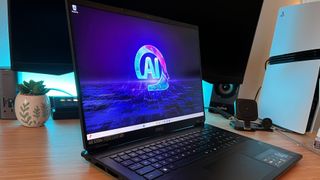
The MSI Stealth 18 AI Studio feels caught in the middle. It’s an 18-incher without the raw horsepower you would expect from a desktop replacement. It’s using an AI-first processor but remains too clunky to truly be considered a productivity laptop first and foremost. Unfortunately, some of the Stealth’s finer moments are caught in the crossfire. That display is gorgeous, truly offering a fantastically immersive experience full to the brim with detail and vivid coloring - but the MSI Raider features the same panel, and does so with an RTX 4090 configuration that comes in only $200 more than the Stealth.
Then there’s another problem. It’s a little tricky to find a wealth of configuration options for the MSI Stealth 18 AI Studio - this is an all-or-nothing machine, with only the RTX 4090 configuration widely available at the time of writing. If you want a big-screen, high-budged 4K RTX 4090 experience, the MSI Raider 18 HX offers a better set of specs and more rounded design, and it’s easily accessible on the shelves.
How I tested the MSI Stealth 18 AI Studio
I used the MSI Stealth 18 AI Studio for a period of six weeks, using the laptop for all my daily work and gameplay in that time. I spent two of those weeks away from home, using the laptop in full lap-mode while I worked and played over the holidays, but also used it on my desk (both solo and plugged into a monitor setup). In that time, I primarily played Indiana Jones: The Great Circle and Fallout 4, but also benchmarked Shadow of the Tomb Raider, Total War: Three Kingdoms, Returnal, and The Talos Principle 2. I then completed a round of synthetic benchmarks across 3D Mark’s Time Spy, Fire Strike, and Steel Nomad, as well as PC Mark 10 and Cinebench R24. For more information on how we test gaming laptops, check out the full 12DOVE Hardware Policy.
For an alternative brand, check out the best Alienware laptops and best Razer laptops on the market, as well as the best Asus gaming laptops.

Managing Editor of Hardware at 12DOVE, I originally landed in hardware at our sister site TechRadar before moving over to GamesRadar. In between, I've written for Tom’s Guide, Wireframe, The Indie Game Website and That Video Game Blog, covering everything from the PS5 launch to the Apple Pencil. Now, i'm focused on Nintendo Switch, gaming laptops (and the keyboards, headsets and mice that come with them), PS5, and trying to find the perfect projector.
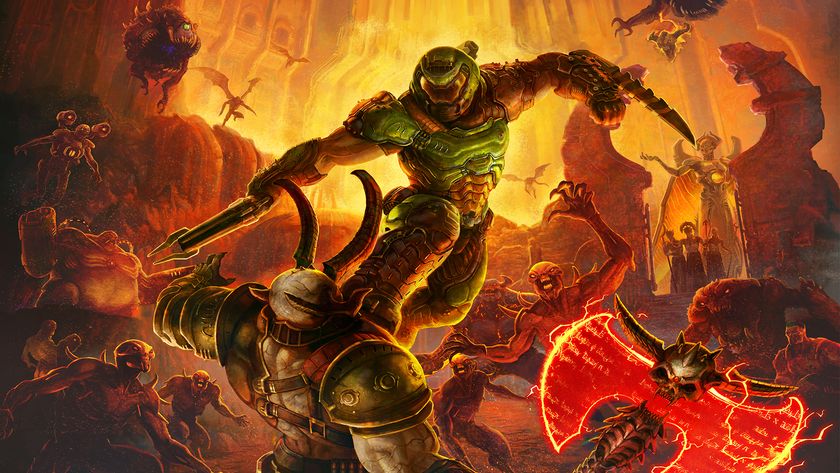
Switch 2 plays Switch 1 games through something "in between a software emulator and hardware compatibility," so don't expect the same backward compatibility we got on 3DS and Wii U
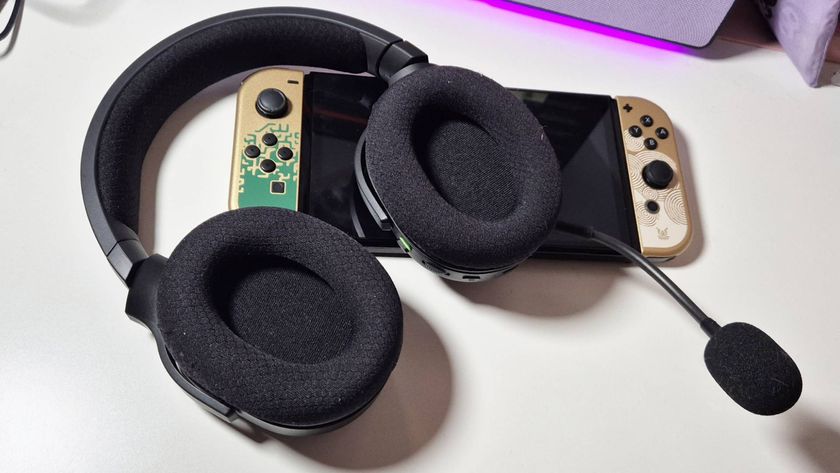
The Nintendo Switch 2's new built-in mic and GameChat feature could be a game changer, but not for first party titles
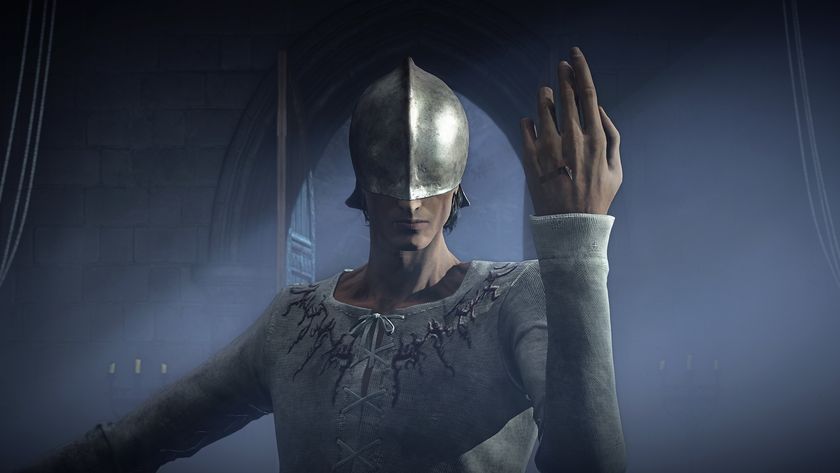
FromSoftware is in its multiplayer arc: After Elden Ring Nightreign, The Duskbloods brings 8-player PvPvE chaos to Nintendo Switch 2
